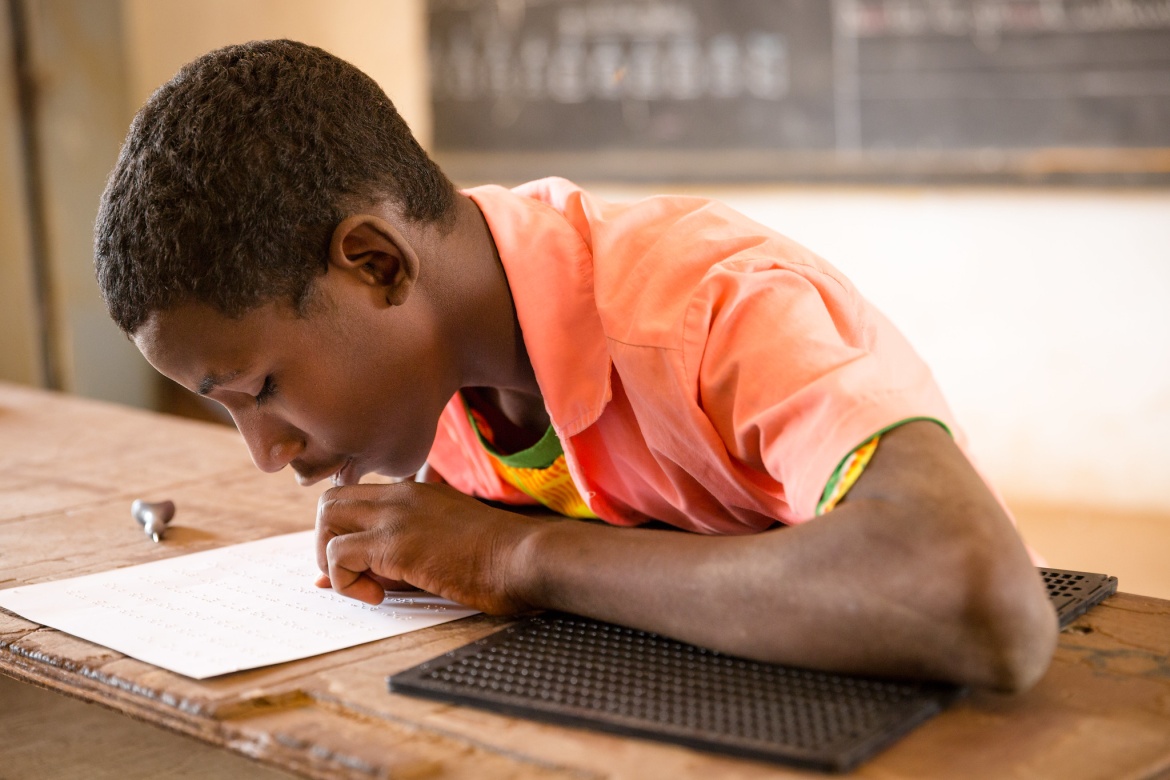Resource Type
Blog
This blog was originally posted on Global Partnership for Education on February 16, 2023 by Jacqueline Jodl, Special Olympics International
Many education systems have made strides in integrating educational settings, but too many children with intellectual disabilities remain marginalized. Special Olympics is challenging governments to allocate 3% of education funding to practices that fully integrate students with intellectual disabilities into school communities.

Credit: GPE/Kelley Lynch
While many countries have made significant strides to meet the needs of children with intellectual disabilities, many others have not taken even the first steps. To this day, no nation has come close to achieving the widespread scale of truly inclusive classrooms and schools where children with intellectual disabilities are fully valued as members of their learning communities.
It is clear much work still needs to be done.
Children with disabilities are too often left behind
Over the past 30 years, governments and international organizations have sounded a millennial tone for the ideals of inclusive education, enshrining their goals in a series of international agreements. Yet despite widespread support for inclusive education policies, the actual change in education practices has fallen far short of delivering on the right to an inclusive and equitable quality education for all.
In the most recent and comprehensive effort to standardize and document such data, the United Nations Children’s Fund (UNICEF) reports that children with disabilities are nearly 50% more likely than their peers without disabilities to have never attended school, and that children with severe disabilities are almost four times more likely than their peers without disabilities to have never attended school.
Other sources indicate that in low- and middle-income countries, as many as half of all children with disabilities who are of primary and lower-secondary school age do not attend school, making them five times more likely to be out of school than their peers without disabilities—and this disparity only increases with education level.
Physical inclusion is not enough
As proclaimed by the UN Convention on the Rights of Persons with Disabilities and the UN Sustainable Development Goal 4, inclusive education is a right. But as demonstrated by child development experts around the world, social inclusion—both in and out of school—is a basic human need.
While many education systems have made strides in achieving integrated educational settings, the reality for many children with intellectual disabilities is that they continue to be marginalized and isolated. These disparities also negatively impact students without intellectual disabilities, for inclusive learning environments help ALL students.
The evidence shows that both students with and without intellectual disabilities develop their social-emotional learning skills which creates a ripple effect in the school climate for learning, resulting in improved academic performance and later career success.
Walking the talk
For more than 50 years, Special Olympics has been erasing the artificial line that divides children. Our view is simple and our focus is clear: if we teach children with and without intellectual disabilities to play together, they can learn, grow, and ultimately live together.
In a call to action, Special Olympics is challenging governments around the world to demonstrate their stated commitments to inclusive education policies by allocating three percent of their education funding to high-quality, evidence-based inclusionary practices that fully integrate students with intellectual disabilities into school communities.
People with intellectual disabilities represent three percent of the population. Allocating three percent of education budgets to develop programs that foster social inclusion is an indisputably fair starting point for governments to ensure their inclusive policies are translated to practices that create truly inclusive school communities.
In our brief “Global State of Inclusion in Education”, we want to expand educators’ and policymakers’ understanding of how the vision of international inclusive education is falling short of including all learners, no matter their identity, background, or ability.
Negative attitudes around disability afflict every society and community. One of the best settings to change and overcome these attitudes is school. The need is great and the time to act is now.
*******
- Read the executive summary of the Global State of Inclusion in Education
- View the infographic on the Global State of Inclusion in Education
